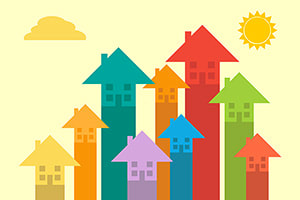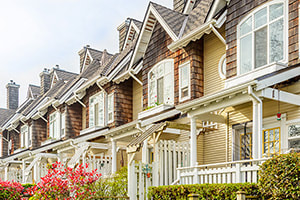 For the fourth month in a row, existing-home sales fell, according to the National Association of Realtors (NAR). Yet the decline was moderate, and all four sales regions of the country posted year-over-year sales gains. According to Lawrence Yun, chief economist for the NAR, a “lack of inventory continues to be the overwhelming factor holding back home sales, but falling affordability is simply squeezing some first-time buyers out of the market.” Despite this, Yun sees encouraging signs in the housing market: “Supply is expected to improve, which will give buyers more options and help tamp down record-high asking prices for existing homes.” More Housing Inventory Needed The increase in inventory levels cannot come soon enough. At the end of May, there were 1.23 million available units on the housing market, a level of inventory that was 7% higher month over month but 20.6% lower year over year. At the current sales pace, inventory levels would supply the market for just 2.5 months, a slight improvement from the 2.4-month supply in April but down significantly from the 4.6-month supply available in May 2020. The average property remained available for sale for just 17 days in May, unchanged from a month earlier but down from 26 days a year earlier. Of all the homes sold in May 2021, 89% remained on the market for just 30 days or less. Prices Up 23.6% The lack of supply is having a direct—and striking—impact on home prices. In May, the median existing-home price soared to a record-high $350,300, marking the 111th straight month of year-over-year price increases since March 2012. In comparison, in May 2020, the average home price reached $283,500. Every sales region in the country posted increases in median sales prices. Who’s Buying Homes? First-time buyers are often the first to be priced out of the housing market by rising prices. This group accounted for just 31% of all home sales in May, unchanged from April but down from 34% in May 2020. According to the NAR “2020 Profile of Home Buyers and Sellers,” first-time buyers represented 31% of the buying public in all of 2020. Meanwhile, a significant number—23%—of May’s transactions were all cash. Individual investors and second-home buyers, two groups who account for many all-cash sales, were responsible for 17% of all transactions in May, unchanged from a month ago and up from 14% from a year ago. Regional Breakdown Northeast – Existing-home sales annual rate of 720,000; a decrease of 1.4% from April 2021 but an increase of 46.9% from May 2020. At $384,300, the median sales price increased 17.1% from May 2020. Midwest – Existing-home sales annual rate of 1.31 million; an increase of 1.6% from April 2021 and 27.2% from May 2020. At $268,500, the median sales price increased 18.1% from May 2020. South – Existing-home sales annual rate of 2.59 million; a decrease of 0.4% from April 2021 and an increase of 47.2% from May 2020. At $299,400, the median sales price increased 22.6% from May 2020. West – Existing-home sales annual rate of 1.18 million; a decrease of 4.1% from April 2021 but an increase of 61.6% from May 2020. At $505,600, the median sales price increased 24.3% from May 2020.
0 Comments
 A homeowner’s association (HOA) is a private organization that oversees a group of homes in a community, common in condominiums, town houses, and master-planned subdivisions. The HOA is managed by a board of directors elected by the community’s residents, and anyone who buys a home in an HOA neighborhood is required to become a member and abide by the organization’s rules. Here’s what an HOA does for you: Protects Home Values HOAs enforce specific rules designed to maintain uniformity and uphold neighborhood appearances. For example, some HOAs prohibit residents from parking broken-down vehicles on front lawns, letting their grass grow too tall, or building unsightly attractions. An HOA may also enforce noise restrictions and curfews. Well-maintained and safe neighborhoods are more likely to draw in potential buyers. Provides a Sense of Community Forming an HOA fosters a greater sense of community among the residents. Neighbors have the opportunity to meet one another when using their shared amenities, attending HOA meetings, or participating in organized social events such as block parties. Maintains Common Areas and Funds Amenities The homeowner’s association is responsible for maintaining the neighborhood’s common landscaping areas, which sometimes means planting trees and mowing the lawn in front of each home. Many HOAs also feature perks like community swimming pools, playgrounds, or tennis courts, all maintained and funded by the HOA. Enforces Rules and Restrictions With some stricter HOAs, you may need approval to make changes to your home’s exterior—even minor ones such as what color you can paint your door or how high a fence can be. There may also be restrictions on renting out your home or a limit on how many people can live there. Violating HOA rules could result in hefty fines. Determines Costs of Benefits Living in a community with an HOA has advantages, but you will need to pay HOA fees on a monthly or yearly basis. Generally, the more special features the neighborhood has, the higher the HOA costs will be. Living in a community with an HOA can be a great option for homeowners. However, it’s not the right choice for everyone. Consider the benefits and drawbacks of an HOA as you look for your new home. |
AuthorA variety of pertinent real estate topics and tips from various authors and contributors. Archives
December 2024
Categorieshow much home can i afford?*
|


